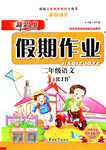题目内容
(C)
Young adult filmmakers all hope to show their works in international festivals like Sundance and Toronto. But what about really young filmmakers who aren’t in film school yet and aren’t, strictly speaking, even adults?
They are at the heart of Wingspan Arts Kids Film Festival, tomorrow, in a setting any director might envy: Lincoln Center. Complete with “red carpet” interviews and various awards, the festival has much in common with events for more experienced moviemakers, except for the age of the participants: about 8 to 18.
“What’s really exciting is that it’s film for kids by kids,” said Cori Gardner, managing director of Wingspan Arts, a nonprofit organization offering youth arts programs in the New York area. This year the festival will include films not only from Wingspan but also from other city organizations and one from a middle school in Arlington, Virginia. “We want to make this a national event,” Ms. Gardner added.
The nine shorts to be shown range from a Claymation biography of B. B. King to a science fiction adventure set in the year 3005. “A lot of the material is really mature,” Ms. Gardner said, talking about films by the New York City branch of Global Action Project, a media arts and leadership-training group. “The Choice is about the history of a family and Master Anti-Smoker is about the dangers of secondhand smoke.” Dream of the Invisibles describes young immigrants’(移民) feelings of both belonging and not belonging in their adopted country.
The festival will end with an open reception at which other films will be shown. These include a music video and a full-length film whose title is Pressures.
71. Wingspan Arts Kids Film Festival _______.
A. is organized by a middle school B. is as famous as the Toronto Festival
C. shows films made by children D. offers awards to film school students
72. Which of the following is true of Wingspan Arts?
A. It helps young filmmakers to make money.
B. It provides arts projects for young people.
C. It’s a media arts and leadership-training group.
D. It’s a national organization for young people.
73. The underlined word “shorts” in Paragraph 4 refers to _______.
A. short trousers B. short kids C. short films D. short stories
74. Movies to be shown in the festival _______.
A. cover different subjects
B. focus on kids’ life
C. are produced by Global Action Project
D. are directed by Ms. Gardner
75. At the end of this film festival, there will be _______.
A. various awards B. “red carpet” interviews
C. an open reception D. a concert at Lincoln Center
71--75 CBCAC

 新思维寒假作业系列答案
新思维寒假作业系列答案